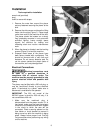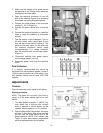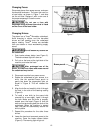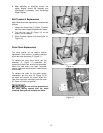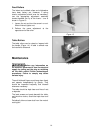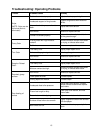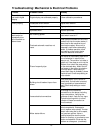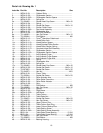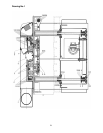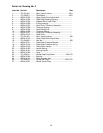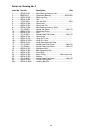
17
Trouble Probable Cause Remedy
Motor starter failure.
If you have access to a voltmeter, you
can separate a starter failure from a
motor failure by first, verifying
incoming voltage at 220+/-20 and
second, checking the voltage
between starter and motor at 220+/-
20. If incoming voltage is incorrect,
you have a power supply problem. If
voltage between starter and motor is
incorrect, you have a starter problem.
If voltage between starter and motor
is correct, you have a motor problem.
Motor failure.
If electric motor is suspect, you have
two options: Have a qualified
electrician test the motor for function
or remove the motor and take it to a
qualified electric motor repair shop
and have it tested.
Miswiring of the unit.
Double check to confirm all electrical
connections are correct and properly
tight. The electrical connections other
than the motor are pre-assembled
and tested at the factory. Therefore,
the motor connections should be
double checked as the highest
probability for error. If problems
persist, double check the factory
wiring.
Machine will not
start/restart or
repeatedly trips
circuit breaker or
blows fuses.
On/off switch failure.
If the on/off switch is suspect, you
have two options: Have a qualified
electrician test the switch for function,
or purchase a new on/off switch and
establish if that was the problem on
changeout.



